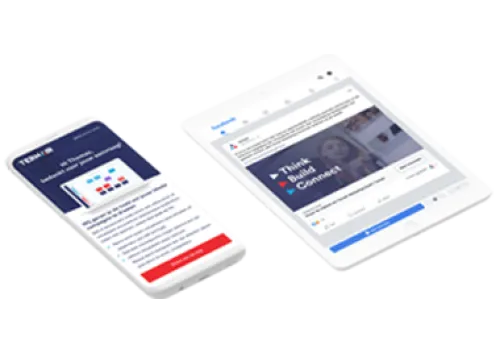What are the benefits of marketing automation?
Marketing automation contributes to more effective marketing and better customer relationships in several ways. By combining data and technology, companies can better understand customers, communicate in a more targeted way and continuously improve their marketing activities. Here are the key benefits.
Efficiency and time savings
Automation takes a lot of repetitive work off your hands. Repetitive tasks happen automatically, making campaigns more consistent and less prone to error. This leaves more time to work on growth and quality.
More targeted lead follow-up
Leads are automatically followed up with relevant content that matches needs. Potential customers receive the right information at the right time, guiding them step by step towards a purchase decision. This not only increases engagement, but also the conversion rate.
Customer Retention
In your customer data, all kinds of signals arrive (real-time). From order systems, customer service notes, web visits to store (checkout) information. The proper registration and follow-up of an order, a complaint and the follow-up offer are overcome with Marketing Automation. More retention at upsell also simply means less pressure on generating new customers.
Personalized communication at scale
By using customer data smartly, companies can send personalized messages to large groups of customers without extra work. Each recipient gets content that matches their preferences, behavior or stage in the customer journey. This makes communication feel personal, while the process is fully automated.
Better insights
Marketing automation provides comprehensive reports on behavior, performance and results. By analyzing that data, companies can see which campaigns are performing best and where improvements can be made. That makes it easier to make decisions based on facts rather than feelings.
Close collaboration between marketing and sales
When both teams work with the same up-to-date data, lead transfer is much more efficient. Marketing can clearly identify which leads are ready for follow-up, while sales has better insight into potential customers' interests and behavior. This creates more trust, less miscommunication and higher conversions.
How does marketing automation work?
Marketing automation works by bringing together data, triggers and workflows. A trigger is an action taken by a user, such as opening an e-mail or clicking on a link. A workflow is the series of steps that follow automatically, such as sending a follow-up email or adjusting a lead score.
Suppose someone views a product on the Web site. That visit can automatically trigger an email with additional information or an offer that matches the customer's interest. Thus, marketing automation responds directly to behavior and provides relevant communication.
The operation of marketing automation consists of four steps:
1. Data collection
The software continuously collects information about the customer and interactions through various channels such as email, websites, social media and events. All these data combine to form a complete picture of the customer and their stage in the customer journey.
2. Segmentation of target groups
With the collected data, customers are automatically divided into groups with similar characteristics or interests. Thus, each target group receives messages appropriate to their situation, from first encounter to repeat purchase.
3. Automatic communication flows
As soon as a customer shows interest or performs a specific action, a series of messages or actions are automatically triggered. This could be an e-mail with additional information, a reminder about a product or an invitation to an event. In this way, communication moves with the customer's behavior.
4. Analyze and optimize
The results of campaigns are continuously measured and analyzed. By looking at behavior and performance, communications can be increasingly aligned with what customers expect and value.
Practice example:
Suppose someone downloads a white paper on data integration. From that moment, several triggers and workflows are automatically activated:
Workflow: the visitor immediately receives an e-mail with a thank-you message and a link to additional articles on the same topic.
Workflow: the system registers interest and automatically schedules a follow-up e-mail with in-depth information or a customer case.

Workflow: the visitor receives an invitation to a webinar on data integration, tailored to the interest previously expressed.
Workflow: this person's profile is automatically enriched with new data and the sales team receives a notification to contact them for further follow-up.










